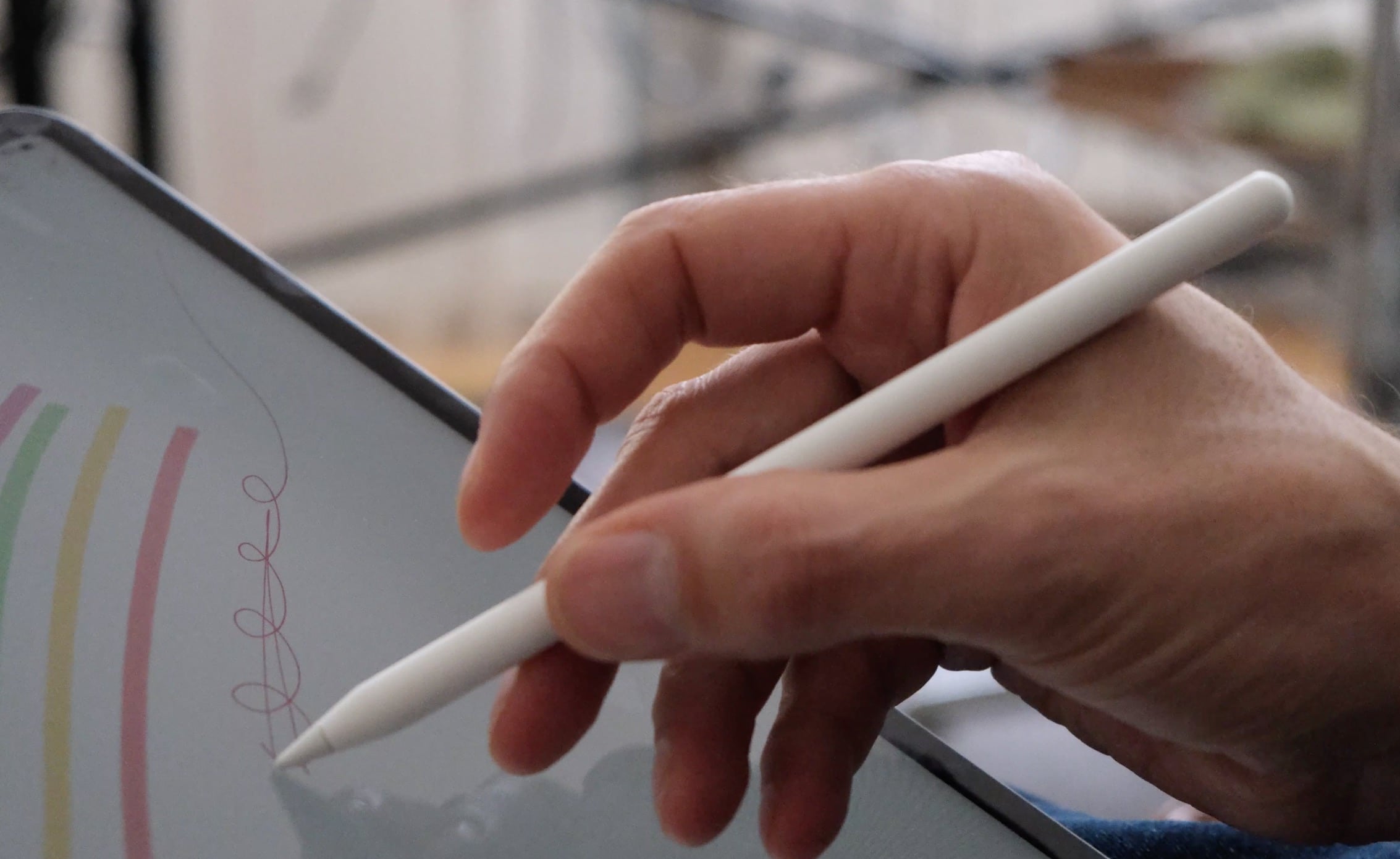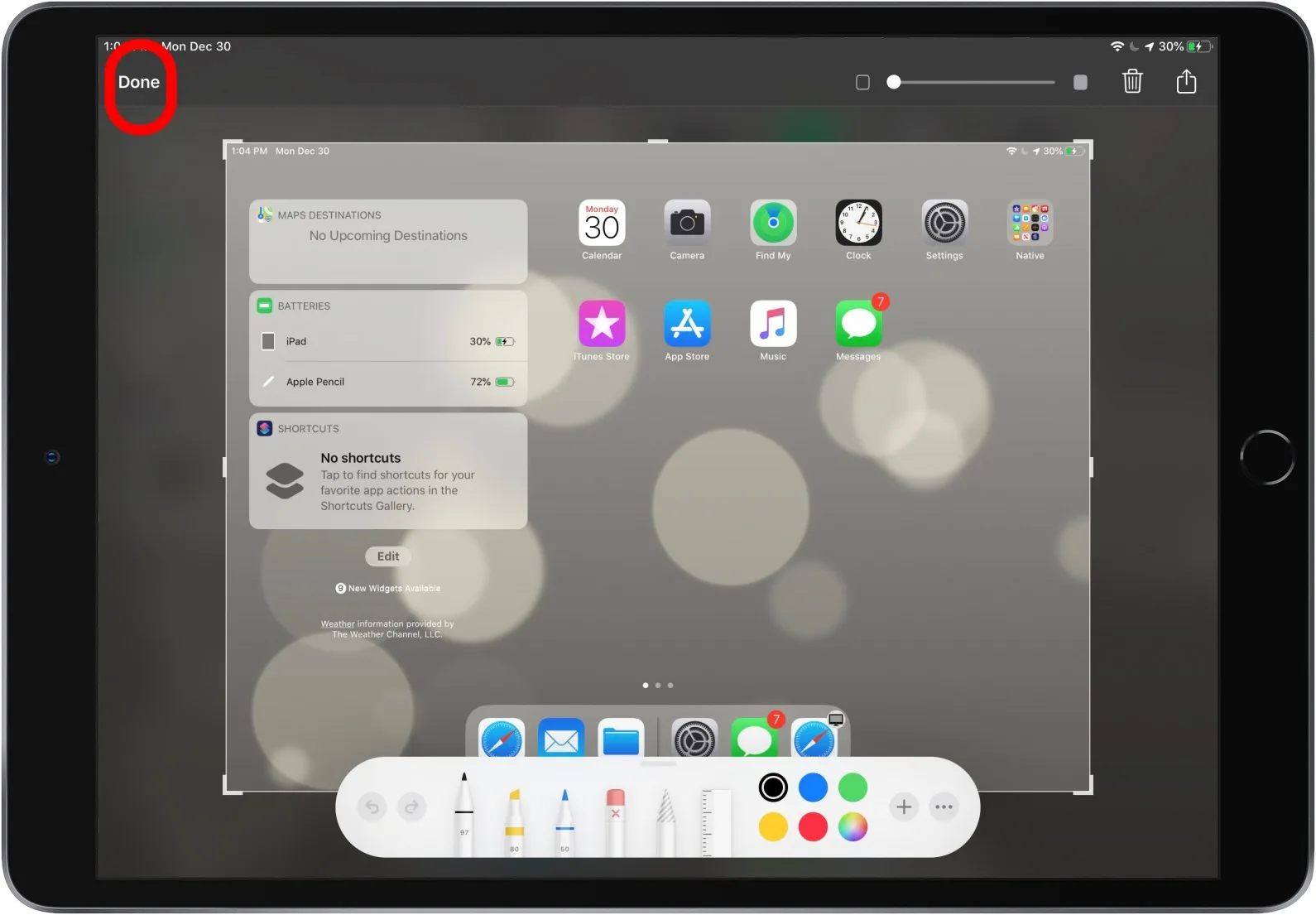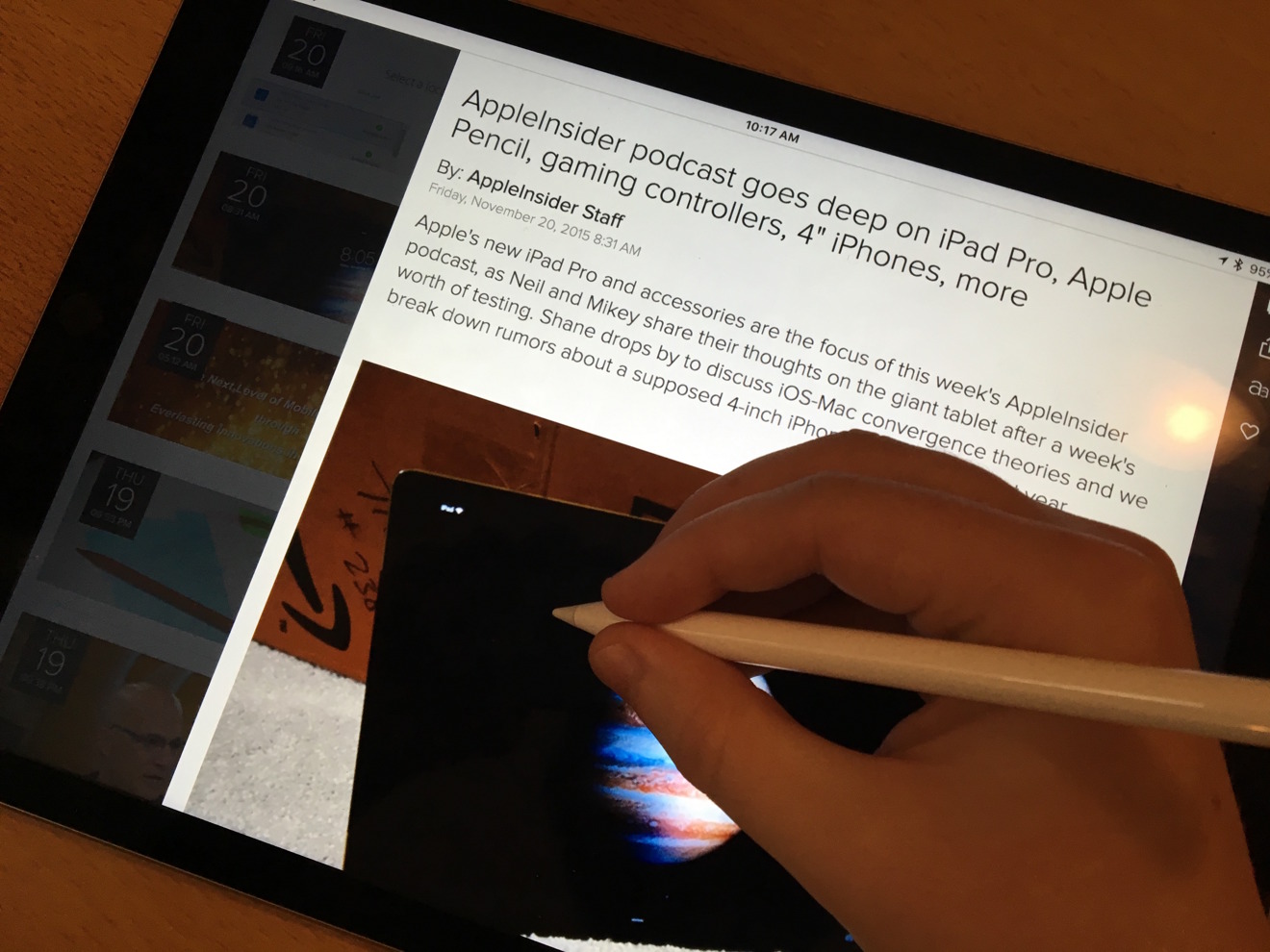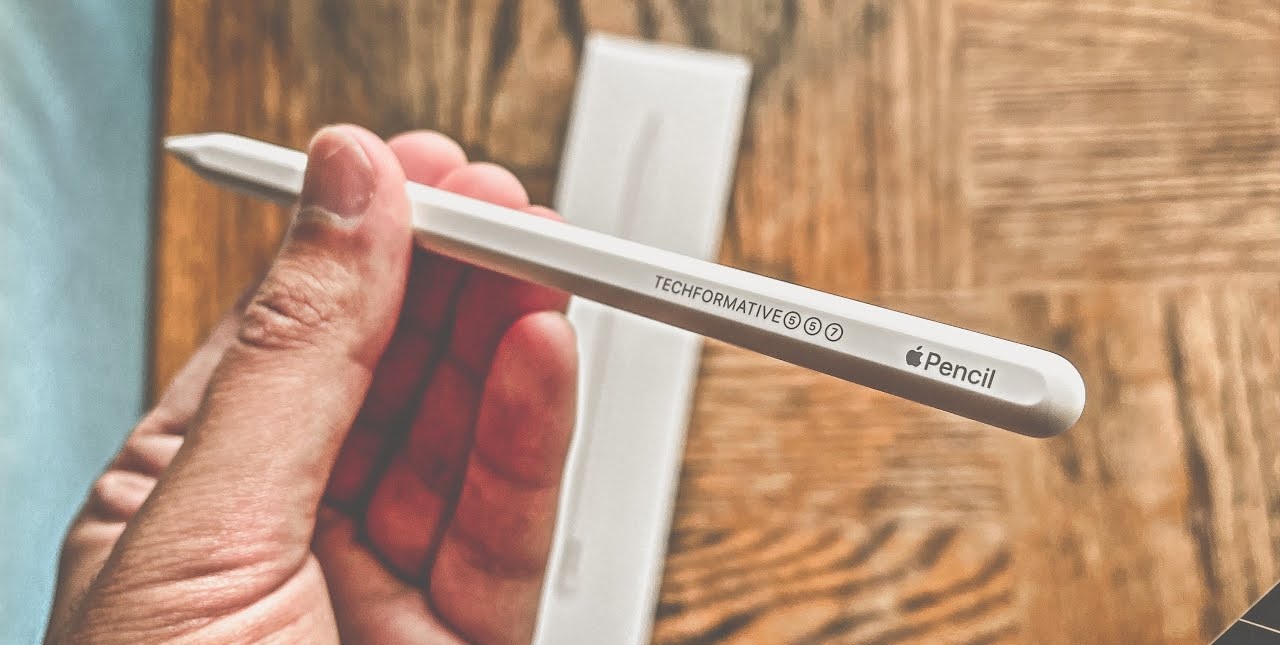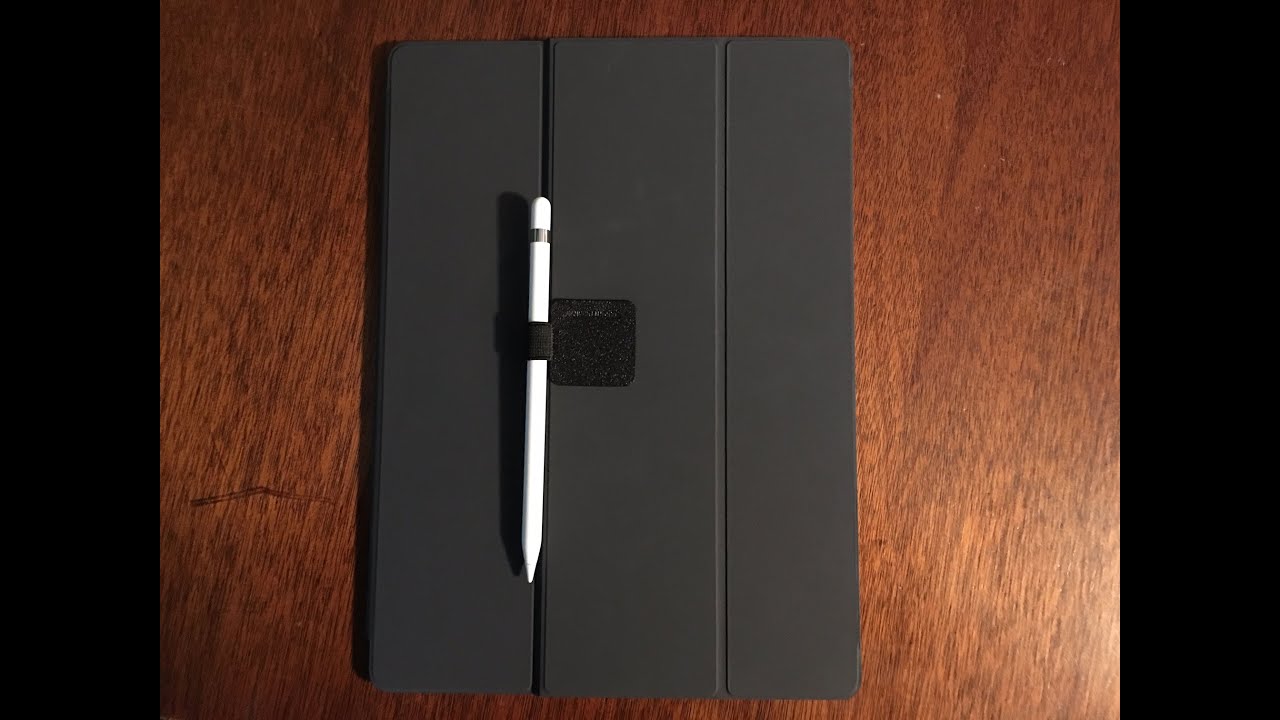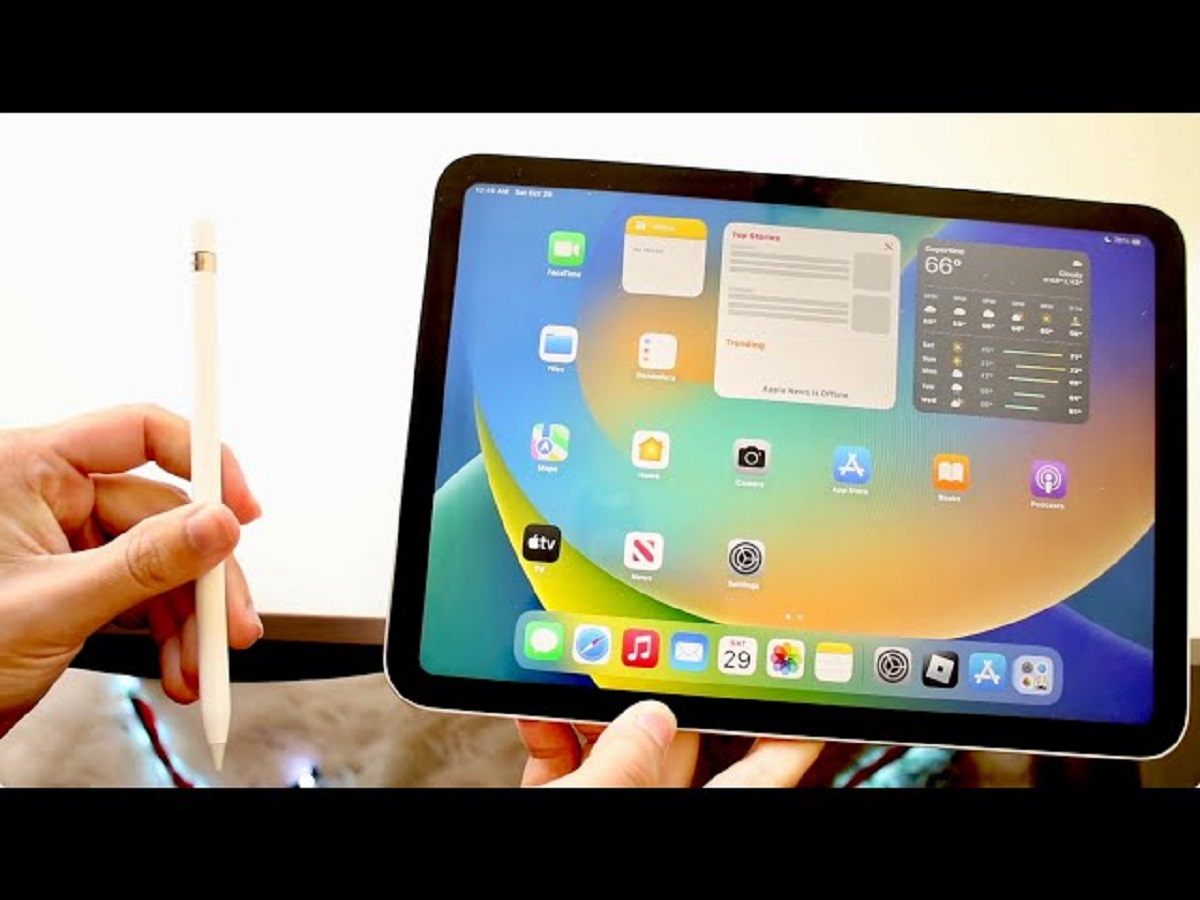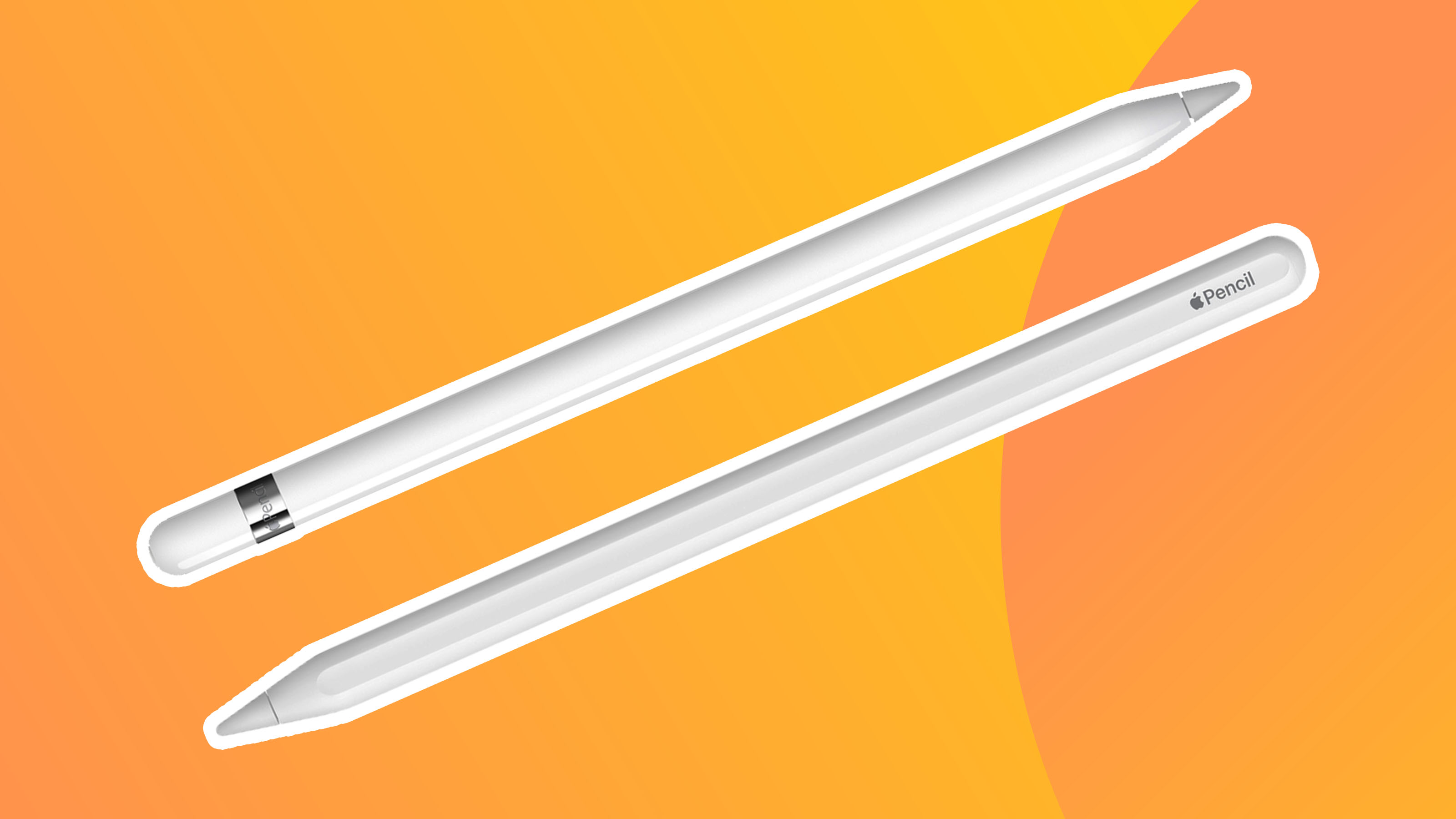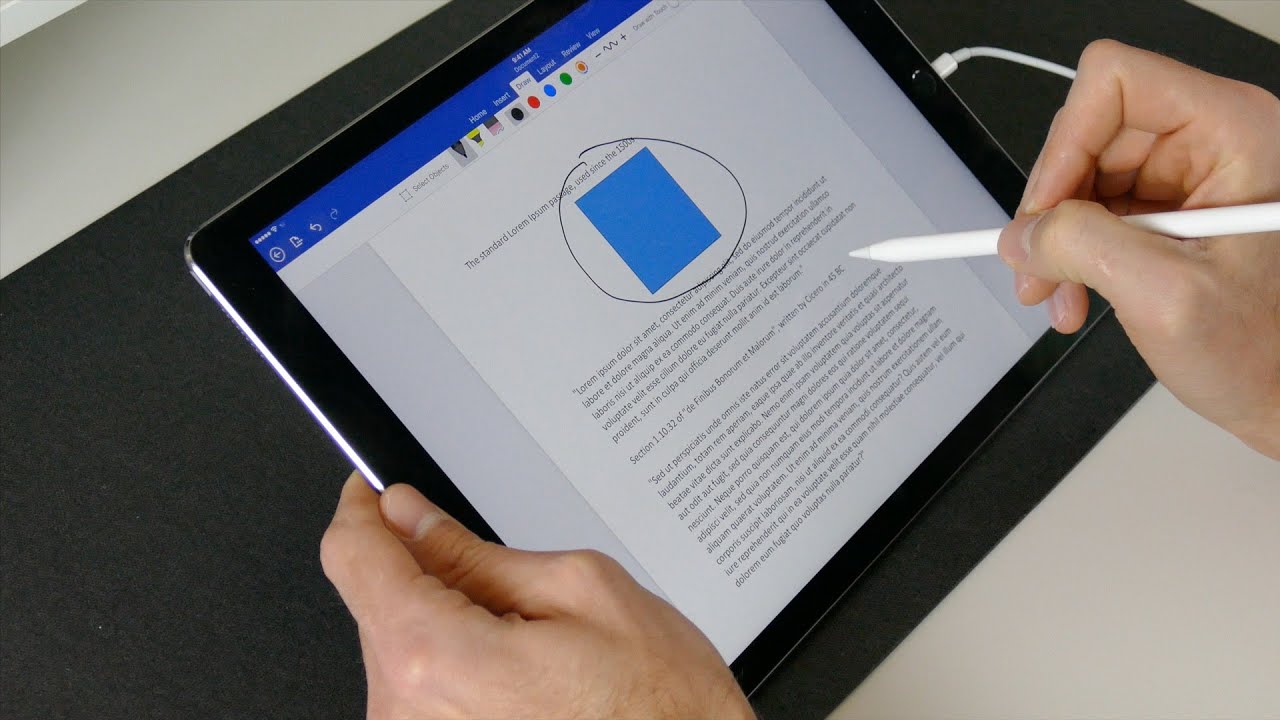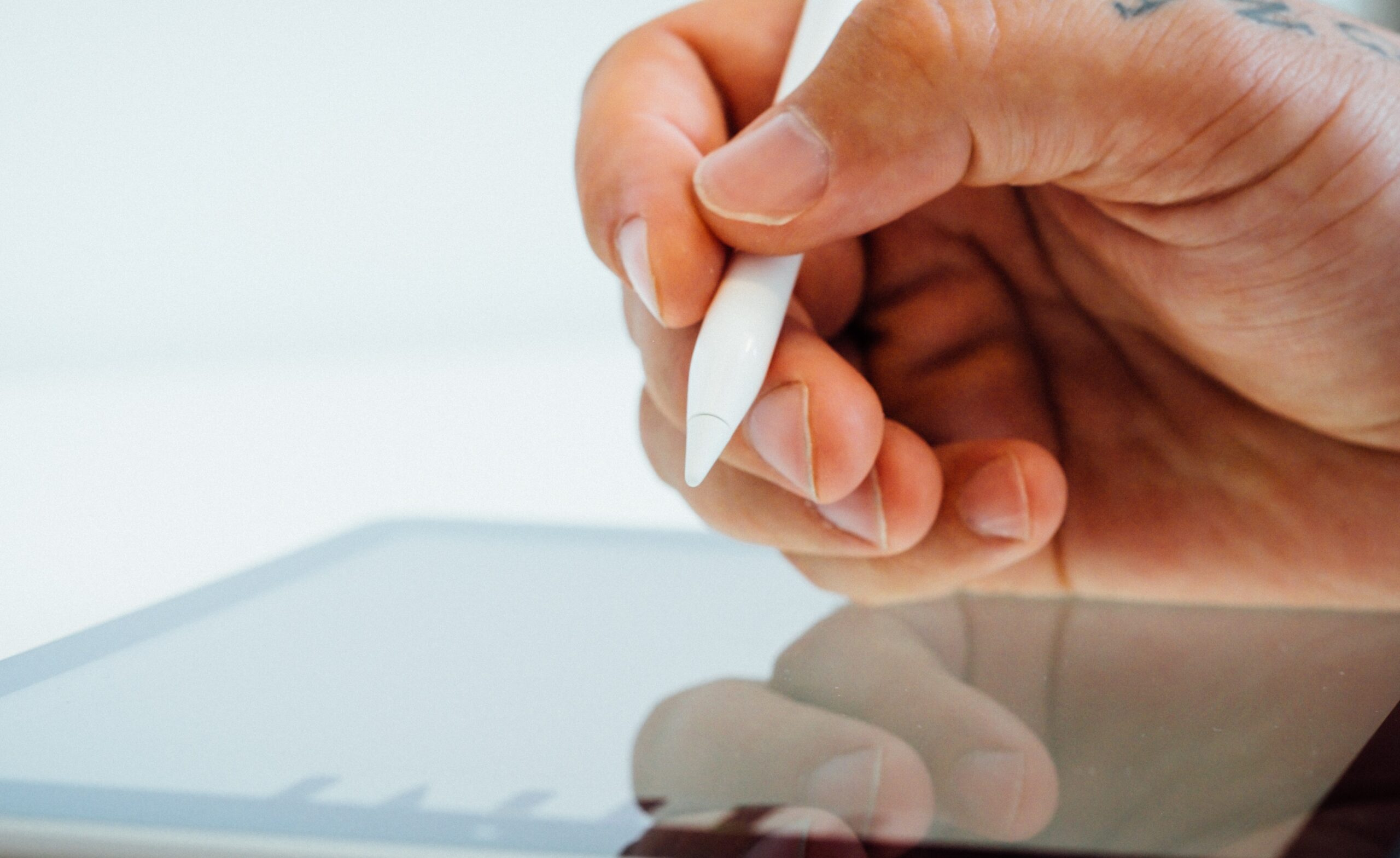Introduction
The Apple Pencil is a remarkable tool that has revolutionized the way we interact with our devices, especially for creative professionals and technology enthusiasts. Whether you’re an artist sketching digital masterpieces, a student taking notes in class, or an avid gamer immersing yourself in virtual worlds, holding the Apple Pencil correctly is essential to enhance your user experience and maximize productivity.
While it may seem like a simple task, finding the perfect grip for the Apple Pencil can make a significant difference in your comfort and accuracy. In this article, we will explore various techniques to help you master the art of holding the Apple Pencil effortlessly.
After all, the right grip not only improves your drawing or writing precision but also prevents fatigue and discomfort that may arise from using the Apple Pencil for extended periods. So, let’s dive in and discover the best methods for holding the Apple Pencil with ease and finesse.
Finding the Perfect Grip
When it comes to gripping the Apple Pencil, there isn’t a one-size-fits-all approach. Everyone has different hand sizes, preferences, and comfort levels. Therefore, finding the perfect grip is highly subjective and may require some experimentation. However, here are some tips to help you get started:
1. Explore Different Positions: Start by holding the Apple Pencil in different positions, including the traditional pen grip, the tripod grip (using your thumb, index, and middle finger), or the underhand grip (resting the pencil on the heel of your hand). Experimenting with these positions allows you to find the grip that feels most natural and comfortable for you.
2. Consider Your Writing Style: Your writing or drawing style may influence the grip that works best for you. If you tend to apply more pressure while writing or prefer a looser grip for smooth strokes, be mindful of how different grips suit your style and adjust accordingly.
3. Pay Attention to Support: Ensure that your hand is properly supported while holding the Apple Pencil. Resting your palm on the screen or using a tablet stand can provide stability and prevent unintentional touches or strain on your wrist.
4. Seek Ergonomic Solutions: If you frequently use the Apple Pencil for extended periods, consider exploring ergonomic accessories such as pencil grips or silicone sleeves to provide extra comfort and reduce fatigue.
5. Trust Your Comfort: Ultimately, the grip that feels most comfortable and natural to you is the one you should adopt. Listen to your body and make adjustments as needed to ensure a relaxed and ergonomic grip.
Remember, finding the perfect grip is a personal journey and may require time and experimentation. Don’t be afraid to try different techniques until you find the one that feels just right.
Correct Hand Placement
Hand placement plays a crucial role in maintaining control and precision while using the Apple Pencil. Here are some guidelines for achieving the correct hand placement:
1. Align Your Writing Hand: Position your dominant hand in alignment with the Apple Pencil, ensuring that your knuckles are not angled unnaturally. This allows for a smooth and natural movement while writing or drawing.
2. Stabilize with Your Non-Writing Hand: Use your non-writing hand to stabilize your device or rest it on a surface. This helps to minimize shaking or wobbling, allowing for more accurate strokes and reducing hand fatigue.
3. Relax Your Fingers: Maintain a relaxed grip by lightly wrapping your fingers around the Apple Pencil. Avoid excessive squeezing or gripping too tightly, as it can lead to discomfort and may hinder your control over the stylus.
4. Use Your Wrist and Arm: The movement of the Apple Pencil should primarily come from your wrist and arm, rather than relying solely on finger movements. This helps to create smoother lines and reduces strain on your fingers.
5. Find Your Sweet Spot: Experiment with different hand placements to find the sweet spot where you feel the most comfortable and have the highest level of control. This may vary depending on your writing or drawing style, so don’t be afraid to make adjustments.
By following these hand placement guidelines, you can optimize your grip and ensure a more enjoyable and efficient experience when using the Apple Pencil.
Balancing the Pencil
Properly balancing the Apple Pencil in your hand is crucial for achieving smooth and precise movements. Here are some tips to help you find the ideal balance:
1. Finding the Center of Gravity: The Apple Pencil has a weighted design that helps to distribute the weight evenly and provide balance. Hold the pencil with a relaxed grip and adjust your hand position until you find the sweet spot where it feels balanced and comfortable.
2. Pay Attention to Tilt: Avoid tilting the Apple Pencil excessively in any direction. Keep it upright or slightly angled to maintain stability and control. This also ensures that the tip makes proper contact with the screen, allowing for accurate input.
3. Use Your Support Hand: Your non-writing hand can also contribute to balancing the Apple Pencil. Place your fingers lightly on the device or use a tablet stand to provide stability and prevent unintentional movements during use.
4. Experiment with Different Grips: Trying different grips can also help you find the right balance. Explore variations like shifting the position of your fingers along the length of the pencil or adjusting the pressure you apply to find what feels most balanced for you.
5. Practice and Adjust: Achieving the perfect balance may require some practice and adjustments. Take the time to experiment and get comfortable with different hand and grip positions until you find the balance that enhances your control and overall experience.
Remember, finding the right balance is a personal preference. What works for one person may not work for another, so don’t be afraid to experiment and make adjustments until you find the perfect balance that suits you.
Holding the Pencil Lightly
One common mistake when using the Apple Pencil is gripping it too tightly. Holding the pencil lightly can improve control, reduce strain, and enhance your overall experience. Here are some tips on holding the pencil lightly:
1. Loosen Your Grip: Start by consciously loosening your grip on the Apple Pencil. Instead of squeezing tightly, allow your fingers to lightly wrap around the pencil, maintaining a relaxed posture.
2. Find the Minimal Pressure: Experiment with applying minimal pressure while writing or drawing. The Apple Pencil is designed to be highly sensitive, so even a light touch will register on the screen. Avoid pressing down too hard, as it can lead to fatigue and lack of fine control.
3. Engage Your Whole Arm: By using your whole arm to move the Apple Pencil instead of relying solely on your fingers, you can achieve smoother and more precise strokes. This technique also helps to alleviate hand and finger strain.
4. Take Advantage of Tilt and Angle: The Apple Pencil supports tilt and angle sensitivity, which means you can achieve different effects by varying the angle of the pencil. By holding the pencil lightly, you can easily make subtle adjustments to the tilt for shading or other artistic techniques.
5. Practice Control and Accuracy: Holding the pencil lightly requires practice and control. Engage in exercises that focus on precision and accuracy, such as tracing lines or drawing small shapes. This will train your hand muscles to produce controlled movements with a light touch.
Remember, holding the Apple Pencil lightly not only reduces strain and fatigue but also allows for greater control and precision. So, relax your grip and let the sensitivity of the Apple Pencil work its magic.
Maintaining a Relaxed Grip
Keeping a relaxed grip on the Apple Pencil is essential for a comfortable and enjoyable drawing or writing experience. Here are some tips on maintaining a relaxed grip:
1. Be Mindful of Tension: Pay attention to any tension that may be building up in your hand and fingers while using the Apple Pencil. If you notice excessive tightness, take a moment to consciously relax your muscles and release the tension.
2. Practice Finger Stretching Exercises: To prevent cramping or stiffness, incorporate finger stretching exercises into your routine. Gently stretch your fingers by extending them outwards and holding the stretch for a few seconds. This helps to promote flexibility and relieve any tension in the hand.
3. Take Regular Breaks: It’s important to give your hand and fingers periodic rest from using the Apple Pencil. Take short breaks every 15-20 minutes to stretch your hand and relax your grip. This will help prevent strain or fatigue from prolonged use.
4. Use Supportive Accessories: Consider using accessories like grip covers or pencil grips that provide ergonomic support and promote a relaxed grip. These accessories can help reduce strain on your hand and enhance your comfort while using the Apple Pencil.
5. Listen to Your Body: Pay attention to any discomfort or pain in your hand, wrist, or fingers while using the Apple Pencil. If you experience any discomfort, adjust your grip or take a longer break to allow your muscles to rest and recover.
By maintaining a relaxed grip, you improve your drawing or writing technique, reduce fatigue, and avoid unnecessary strain on your hand and fingers. Prioritize your comfort and make adjustments as needed to ensure a relaxed and enjoyable drawing or writing experience with the Apple Pencil.
Avoiding Tension
Tension in the hand and fingers can hinder your ability to fully enjoy the Apple Pencil experience. By consciously avoiding tension, you can enhance your control, precision, and overall comfort while using the stylus. Here are some tips to help you avoid tension:
1. Relax Your Shoulders: Tension often starts from the upper body, so it’s important to keep your shoulders relaxed while using the Apple Pencil. Take a moment to consciously drop your shoulders and release any tension you may be holding.
2. Maintain Proper Posture: Sitting or standing with good posture allows for better blood circulation and reduces the strain on your hand and fingers. Sit up straight, align your spine, and avoid slouching to minimize tension in your upper body.
3. Take Deep Breaths: Deep breathing exercises can help alleviate stress and tension in your body, including your hands and fingers. Take a few deep breaths, inhaling slowly through your nose and exhaling through your mouth, to calm your body and release any tension.
4. Take Regular Breaks: Frequent breaks are essential to prevent tension build-up. Every 15-20 minutes, take a short break, stretch your fingers, massage your hand, and relax your grip. This will allow your hand muscles to rest and reduce the risk of developing tension-related discomfort.
5. Practice Mindfulness: Stay mindful of your body and how it responds while using the Apple Pencil. Notice any areas of tension and consciously release them. Be aware of your grip pressure and make adjustments whenever you feel it becoming too tight.
By consciously avoiding tension, you can create a more relaxed and enjoyable experience while using the Apple Pencil. Remember, a relaxed hand and body contribute to improved control, better precision, and reduced fatigue.
Taking Breaks to Prevent Strain
Using the Apple Pencil for extended periods without breaks can lead to strain and discomfort in your hand, fingers, and wrist. Taking regular breaks is essential to prevent these issues and maintain your productivity and enjoyment. Here are some tips for incorporating breaks into your Apple Pencil usage:
1. Set Reminders: It’s easy to get engrossed in your work or activities and forget to take breaks. Set reminders or use timers on your device to prompt you to take short breaks at regular intervals. This will help you establish a healthy break routine.
2. Follow the 20-20-20 Rule: Every 20 minutes, look away from your device and focus on an object at least 20 feet away for 20 seconds. This helps relax your eye muscles and reduces eye strain, which can be related to hand and wrist discomfort.
3. Stretch and Move: During your breaks, take the time to stretch your fingers, rotate your wrists, and move your arms and shoulders. This helps to increase blood flow, loosen up your muscles, and prevent stiffness and fatigue in your hand and wrist.
4. Practice Finger Exercises: Perform simple finger exercises during your breaks to promote flexibility and relieve tension. For example, open and close your fingers, make a fist and release, or gently stretch your fingers by extending them outward and holding the stretch for a few seconds.
5. Stay Hydrated: Keep a water bottle nearby and stay hydrated. Drinking enough water helps to maintain overall muscle health and reduce the risk of muscle cramps or stiffness in your hand and fingers.
6. Engage in Other Activities: Use your breaks as an opportunity to engage in activities that don’t involve the Apple Pencil. Take a short walk, practice deep breathing, or do some light stretching to refresh your mind and body.
Taking regular breaks not only prevents strain and discomfort but also boosts your overall productivity and creativity. Incorporate these breaks into your routine to ensure a healthy and enjoyable Apple Pencil experience.
Adjusting Your Grip for Different Tasks
The Apple Pencil is a versatile tool that can be used for various tasks, from precise drawings to taking quick notes. To optimize your performance and comfort, it’s important to adjust your grip based on the specific task at hand. Here are some tips for adjusting your grip for different tasks:
1. Precision Tasks: For tasks that require precise control, such as intricate drawings or fine details, adopt a grip that allows for a firm hold on the Apple Pencil. Place your thumb and index finger closer to the tip of the stylus, providing more stability and allowing for finer movements.
2. Speed and Fluidity: When you need to write or sketch with speed and fluidity, a looser grip can be beneficial. Shift your fingers slightly away from the tip, allowing for freer movements and reducing friction between the stylus and the screen.
3. Extended Use: If you anticipate using the Apple Pencil for an extended period, consider a grip that minimizes fatigue. Experiment with different grip positions, such as the tripod grip, which distributes the pressure across three fingers, reducing strain on any single digit.
4. Shading and Angle: Adjusting your grip for shading or achieving different angles can greatly enhance your artistic capabilities. Tilt the Apple Pencil slightly to change the angle of the tip on the screen, allowing for shading or achieving different brush strokes. Experiment with different finger positions and grips to find what works best for you.
5. Multitasking: If you frequently switch between tasks or use the Apple Pencil alongside other tools, having an adaptable grip is essential. Find a grip that allows for quick transitions and easy maneuverability between the different tools or functions.
Remember, versatility is one of the Apple Pencil’s strengths. Adjusting your grip based on the task at hand enables you to fully harness its capabilities and maximize your performance and comfort.
Experimenting with Different Angles
One of the unique features of the Apple Pencil is its sensitivity to different angles. By exploring and experimenting with various angles, you can unlock a whole new level of creativity and precision. Here are some tips for experimenting with different angles:
1. Try Vertical and Horizontal Angles: Start by exploring the vertical and horizontal orientations of the Apple Pencil. Depending on the task at hand, you may discover that certain angles naturally lend themselves to more efficient and accurate drawing or writing.
2. Vary the Tilt Angle: Experiment with tilting the Apple Pencil at different angles to create different effects. A slight tilt can allow for shading and gradient effects, while a steeper tilt can produce thicker lines or bolder strokes.
3. Adapt to Different Drawing Styles: Different drawing styles may benefit from different angles. For detailed and precise drawings, a more upright angle with a fine tip may be ideal, while a flatter angle might be more suitable for broad strokes and expressive artwork.
4. Combine Angles with Pressure: Combine angle variations with changes in pressure to achieve even more nuanced results. Light pressure with a shallow angle can create delicate lines, while heavier pressure with a steeper angle can produce bold, expressive marks.
5. Embrace Brush Simulation: If you’re using apps with brush simulation, take advantage of the Apple Pencil’s angle sensitivity to simulate various brush types. Experiment with different angles to create brush-like effects such as calligraphy, watercolor washes, or even realistic pencil shading.
6. Practice and Refine: It may take some practice to master working with different angles. Take the time to practice with different strokes and techniques, and gradually refine your skills as you become more comfortable and familiar with the Apple Pencil’s angle sensitivity.
Remember, exploring and experimenting with different angles allows you to fully utilize the capabilities of the Apple Pencil and discover your own unique artistic style. Embrace the flexibility and creativity that angle variations can bring to your digital artwork and writing.
Conclusion
The way you hold and grip the Apple Pencil can greatly impact your experience, productivity, and control when using it for various tasks. By following the tips and techniques outlined in this article, you can develop the skills to hold the Apple Pencil correctly and comfortably.
Remember to find the grip that feels natural and comfortable for you, while adjusting it according to the task at hand. Practice different hand placements, experiment with various angles, and strive for a relaxed grip to reduce tension and fatigue.
Additionally, incorporating regular breaks and engaging in finger and hand stretching exercises can prevent strain and discomfort during extended Apple Pencil use. Taking care of your physical well-being enhances your overall performance and allows you to fully enjoy the pleasures of working with the Apple Pencil.
So, embrace the versatility of the Apple Pencil, unleash your creativity, and continue to refine your technique as you explore the possibilities it offers. Remember, mastering the art of holding the Apple Pencil is a personal journey, and with time and practice, you will find the grip and style that suits you best.







